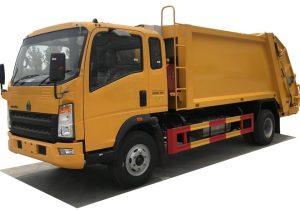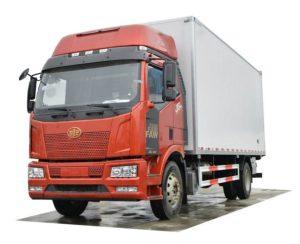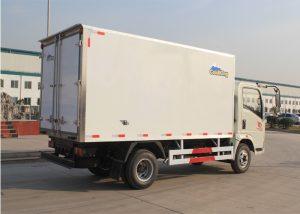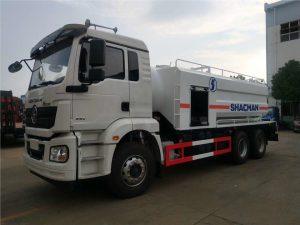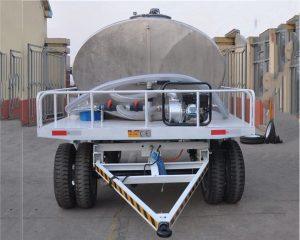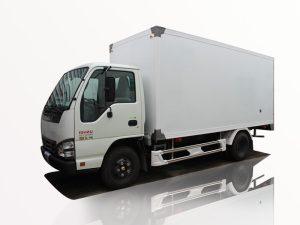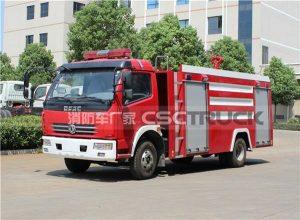Monday to Saturday - 8:00 -17:30
Understanding the 20 Ton Wrecker: A Comprehensive Guide
The 20 ton wrecker is an essential piece of equipment in the heavy towing and recovery industry. Designed to handle various towing scenarios, it offers unmatched power and versatility. In this article, we will explore everything from specifications and features to operational best practices, including practical examples and tips for using these powerful machines effectively.
What is a 20 Ton Wrecker?
A 20 ton wrecker is a type of tow truck equipped to haul and transport heavy load vehicles, machinery, and equipment. It is built with specialized features that enable operators to perform recovery tasks on larger and heavier loads. Typically, these wreckers have a hauling capacity of up to 20 tons, making them ideal for industrial and commercial applications.
Key Features of a 20 Ton Wrecker
1. Towing Capacity
The most significant feature of a 20 ton wrecker is its towing capacity, allowing it to pull heavier loads compared to smaller wreckers. This capability is critical for responding to accidents and breakdowns involving larger vehicles.
2. Boom and Winch System
Equipped with a robust boom and winch system, a 20 ton wrecker can lift and recover vehicles that are in difficult positions. The boom can extend and swivel, providing flexibility to access various angles. The winch aids in pulling heavy loads, ensuring a secure recovery process.
3. Stabilizers
Stabilizers are crucial to ensure the wrecker remains steady during operation. This feature helps prevent tipping and enhances safety when lifting or moving heavy loads.
4. Versatile Towing Accessories
A 20 ton wrecker comes equipped with various accessories such as dollies, chains, and straps. These tools assist in securing and transporting vehicles safely.
5. Enhanced Visibility
Most models feature bright LED lights and reflective signage, enhancing visibility during nighttime operations or in low-light conditions, improving safety for both operators and other road users.
Common Uses of a 20 Ton Wrecker
20 ton wreckers are versatile and can be used for several applications. Here are some common uses:
1. Heavy-Duty Towing
These wreckers are commonly used to tow large trucks, buses, and RVs. They provide the necessary strength to handle these heavier vehicles.
2. Recovery Operations
In situations where vehicles are overturned or in difficult-to-reach locations, a 20 ton wrecker can be essential for recovery efforts. Its powerful winch and adjustable boom can maneuver vehicles into safe positions.
3. Construction and Equipment Transport
Construction companies often use 20 ton wreckers to move heavy machinery, such as excavators and bulldozers, to different job sites, ensuring timely operations.
4. Emergency Services
Fire departments and emergency services utilize 20 ton wreckers for incident management, ensuring that vehicles blocking roadways are removed effectively.
Specifications of a 20 Ton Wrecker
Table: Key Specifications
| Specification | Description |
|---|---|
| Towing Capacity | Up to 20 tons |
| Engine Type | Diesel / Gasoline |
| Transmission | Automatic / Manual |
| Dimensions | Varies by model (typically: 25-30 ft in length) |
| Weight | Heavy-duty (often exceeds 20,000 lbs) |
Choosing the Right 20 Ton Wrecker
When selecting a 20 ton wrecker, consider the following factors:
1. Capacity
Ensure the wrecker meets your specific towing needs. Confirm the maximum weight you intend to haul and select appropriately.
2. Brand Reputation
Look for established manufacturers known for producing durable and reliable wreckers. Brands with good customer support are always preferable.
3. Features
Evaluate essential features such as winch strength, boom reach, and stabilizer systems. Each feature plays a crucial role in operational effectiveness.
4. Price vs. Value
While it might be tempting to go for the cheapest option, consider the long-term value and reliability of your investment.
Operational Safety Tips for Using a 20 Ton Wrecker
Safety is paramount when operating heavy machinery like a 20 ton wrecker. Consider the following safety tips:
1. Proper Training
Ensure all operators are thoroughly trained and certified in wrecker operation. Inadequate training can lead to accidents and equipment damage.
2. Safety Gear
Always wear appropriate safety gear, including reflective vests, gloves, and hard hats. This ensures safety during operations in busy or hazardous environments.
3. Pre-Operational Checks
Conduct routine checks on the vehicle, including hydraulic systems, lights, and towing accessories. Address any issues before starting work.
4. Follow Manufacturer Guidelines
Abide by the manufacturer’s operational guidelines. Each model may have specific requirements for safe operation.
Practical Examples of 20 Ton Wrecker Usage
1. Accident Recovery Scenario
Consider a scenario where a large truck has overturned on a busy highway. Emergency services use a 20 ton wrecker to stabilize the vehicle, using its winch to carefully pull the truck back onto its wheels while ensuring safety for both the operators and surrounding vehicles.
2. Heavy Equipment Transport
A construction company needs to move an excavator from one job site to another. With a 20 ton wrecker, they load the machinery securely using dollies and chains, ensuring it’s transported safely and efficiently.
Maintenance of a 20 Ton Wrecker
Regular maintenance is vital for ensuring the longevity and reliability of your 20 ton wrecker. Here are some maintenance tips:
1. Regular Inspections
Conduct frequent inspections of mechanical and hydraulic systems to prevent breakdowns and ensure safe operation.
2. Lubrication
Keep all moving parts well-lubricated, especially the boom, winch, and stabilizers, to facilitate seamless operations.
3. Cleanliness
Keep the wrecker clean, removing dirt and debris that can cause wear and tear or hinder operational visibility.
4. Tire Maintenance
Check tire conditions regularly, ensuring correct pressure and tread depth to provide effective traction and stability during towing.
Cost Considerations for a 20 Ton Wrecker
The cost of a 20 ton wrecker can vary based on several factors:
1. Initial Purchase
New wreckers typically range from $75,000 to $150,000 or more, depending on features and specifications.
2. Maintenance Costs
Regular maintenance costs can add up, factoring in both parts and labor, especially for specialized repairs.
3. Insurance
Carrying comprehensive insurance is critical and can also be a significant expense depending on coverage levels.
4. Fuel Costs
Since these wreckers use substantial fuel, operators should factor fuel into their operational costs, especially for long hauls.
FAQ Section
1. What is the typical weight range for a 20 ton wrecker?
A 20 ton wrecker typically weighs more than 20,000 lbs, depending on its specifications and design.
2. Can a 20 ton wrecker be used for light towing?
While it is designed for heavy towing, a 20 ton wrecker can also perform light towing, although operators may consider using smaller wreckers for efficiency.
3. What types of vehicles can a 20 ton wrecker tow?
It can tow large trucks, buses, RVs, and other heavy machinery, making it highly versatile.
4. How often should a 20 ton wrecker be serviced?
Regular servicing should occur every few months or based on specific operating hours, depending on usage intensity.
5. Are there safety certifications required for operating a 20 ton wrecker?
Yes, operators typically require specific training and certification, which may vary by region or company policy.
6. What accessories come with a 20 ton wrecker?
Common accessories include chains, straps, dollies, safety cones, and emergency lights to enhance towing and recovery capabilities.


